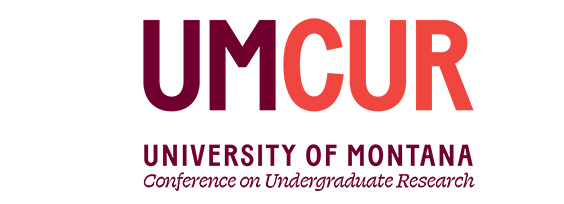Project Type
Poster
Faculty Mentor’s Full Name
Erim Gomez
Faculty Mentor’s Department
Franke College of Forestry and Conservation
Abstract / Artist's Statement
Perceived Post-Graduate Job Prospects of University of Montana Wildlife Biology Students.
The wildlife biology job growth over the next decade is projected to be 1% (US Bureau of Labor Statistics 2022). In courses and through personal experiences students are made aware of the challenges of pursuing a career in this field. I want to determine the perceived post-graduate job prospects current UM Wildlife Biology students hold. Do current students have a positive or negative perception of their job outlook? Further, I want to determine how well students think they have been prepared for a career in this field by our program? I will survey current juniors and seniors in the UM Wildlife Biology Program. They are a key demographic as they are aware of the challenges of their career path and less likely to change majors and are hypothetically committed to acquiring the wildlife degree, and therefore, are the group most focused on career prospects in the wildlife field. An optional survey will be provided in upper division wildlife biology courses and clubs so that we can reach our key demographic. We will ask their opinion regarding certain post-graduation milestones such as getting a job in the wildlife field or pursuing a masters or PhD in this field.
The importance of this information is twofold. Firstly, the opinions of undergraduate students are a gauge as to their dedication to continuing into their field of study, particularly one as specialized and competitive as wildlife biology. Secondly, these students represent a large investment in the future of this field both by the university who input facilities and capital, and by the professors who are established influential researchers. The investment of time by these professors represents a reduction in the time they could otherwise be investing in something else either on a professional or personal front. Crucially this is a nonrefundable investment, as there is a fixed amount of time a professor can give towards the effort of training future technicians and biologists. If those trained graduates are not entering or staying in the field but going elsewhere because of their believed prospects, then that represents a failure to recoup the invested resources put into those individuals by the university, the program and their professors.
Work Cite
U.S. Bureau of Labor Statistics. 2022. Zoologists and wildlife biologists : Occupational outlook handbook. U.S. Bureau of Labor Statistics. Retrieved December 5, 2022, from https://www.bls.gov/ooh/life-physical-and-social-science/zoologists-and-wildlife-biologists.htm
Category
Life Sciences
Perceived Post-Graduate Job Prospects of University of Montana Wildlife Biology Students
UC South Ballroom
Perceived Post-Graduate Job Prospects of University of Montana Wildlife Biology Students.
The wildlife biology job growth over the next decade is projected to be 1% (US Bureau of Labor Statistics 2022). In courses and through personal experiences students are made aware of the challenges of pursuing a career in this field. I want to determine the perceived post-graduate job prospects current UM Wildlife Biology students hold. Do current students have a positive or negative perception of their job outlook? Further, I want to determine how well students think they have been prepared for a career in this field by our program? I will survey current juniors and seniors in the UM Wildlife Biology Program. They are a key demographic as they are aware of the challenges of their career path and less likely to change majors and are hypothetically committed to acquiring the wildlife degree, and therefore, are the group most focused on career prospects in the wildlife field. An optional survey will be provided in upper division wildlife biology courses and clubs so that we can reach our key demographic. We will ask their opinion regarding certain post-graduation milestones such as getting a job in the wildlife field or pursuing a masters or PhD in this field.
The importance of this information is twofold. Firstly, the opinions of undergraduate students are a gauge as to their dedication to continuing into their field of study, particularly one as specialized and competitive as wildlife biology. Secondly, these students represent a large investment in the future of this field both by the university who input facilities and capital, and by the professors who are established influential researchers. The investment of time by these professors represents a reduction in the time they could otherwise be investing in something else either on a professional or personal front. Crucially this is a nonrefundable investment, as there is a fixed amount of time a professor can give towards the effort of training future technicians and biologists. If those trained graduates are not entering or staying in the field but going elsewhere because of their believed prospects, then that represents a failure to recoup the invested resources put into those individuals by the university, the program and their professors.
Work Cite
U.S. Bureau of Labor Statistics. 2022. Zoologists and wildlife biologists : Occupational outlook handbook. U.S. Bureau of Labor Statistics. Retrieved December 5, 2022, from https://www.bls.gov/ooh/life-physical-and-social-science/zoologists-and-wildlife-biologists.htm
